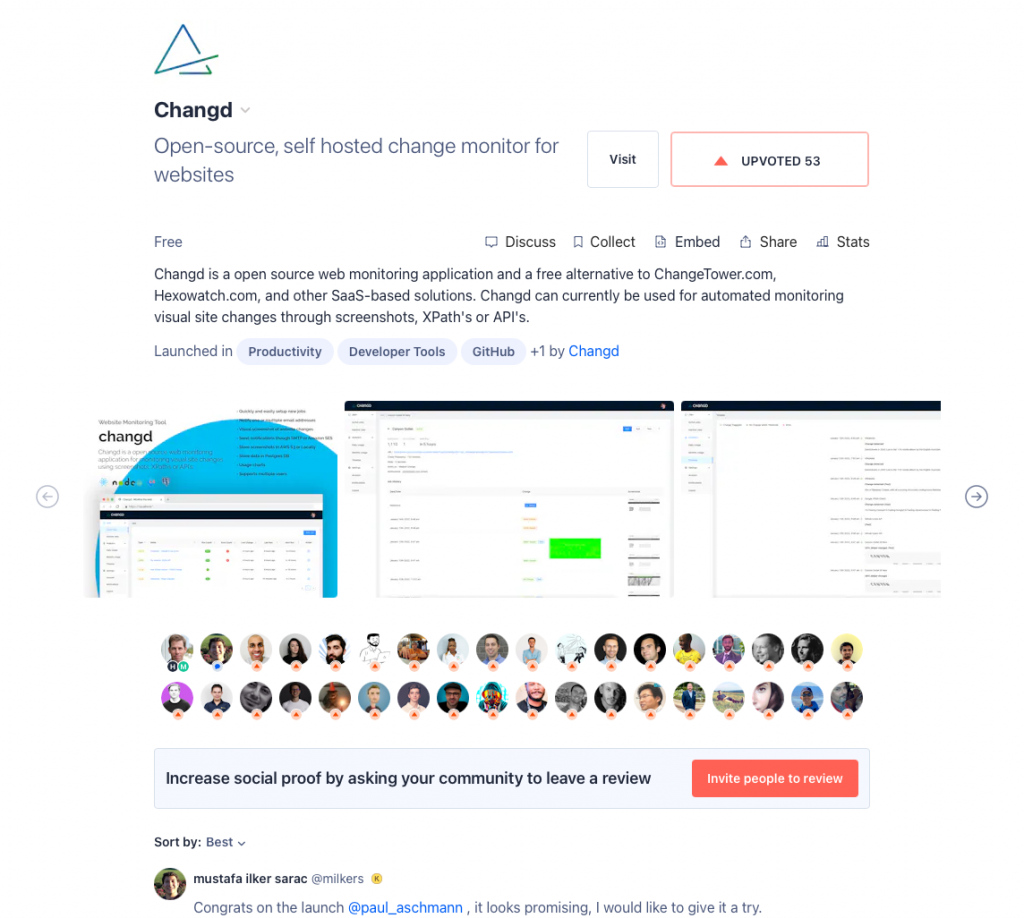My first promotion of a project on ProductHunt.com was changd.app. The site is invaluable as a free, self promotion, marketing platform for both products you launch, and discovering what others are focused on.

Personal collective of ideas, thoughts and notes
My first promotion of a project on ProductHunt.com was changd.app. The site is invaluable as a free, self promotion, marketing platform for both products you launch, and discovering what others are focused on.


My biggest takeaways from this research:
An often overlooked but extremely important aspect of branding, marketing, advertising and general business presence is having a well designed and professional color palette. This is an excellent read into the topic and might be helpful in bringing your company to the next level.
https://www.refactoringui.com/previews/building-your-color-palette
The location-based dating app Tinder was founded on September 1st, 2012, and launched the following October out of Hatch Labs, IAC’s “innovation sandbox.” IAC is the parent company that owns much of Tinder. Since the launch, the Tinder app has become a phenomenon. By January 2014, the app boasted more than 10 million users. [1] By December of 2014, the app had been downloaded more than 40 million times with users swiping 1 billion times per day. [23] On February 3rd, during the IAC earnings call, the company reported that Tinder saw 100% year over year growth in monthly active users (MAU). [24] Like many things with Tinder, it’s valuation is one that’s part myth and part truth. In the Spring of 2014, several sources reported that IAC dropped $500 million to buy another 10% of Tinder from Chamath Palihapitiya—valuing the company at $5 billion. Not long after the story was picked up, Tinder CEO, Sean Rad cited the report as “meaningfully incorrect,” [15] while estimates from Re/Code put the value of the company at the time at $550 million. [25] Later in 2014, rumors were swirling about additional investment in Tinder at $1 billion or more. [26] However, in December, IAC Chairman and Senior Executive Barry Diller reported that the valuation is irrelevant because the company is not a venture backed startup. [27] Beyond its breakout success in the highly-competitive dating space, Tinder has made waves both as a pioneer for mobile user experience (with it’s swiping paradigm) and via its sordid upper management scandal. In this growth study we’re going to focus on the growth engine that made the company so successful and leave a deep dive into the management scandal and sexual harassment lawsuit—that forced their CMO and co-founder Justin Mateen to resign and early employee Whitney Wolfe to leave—for other sites with much deeper journalistic and investigative chops. If you want to read more on the turmoil on the management team and lawsuits read more here. But in a world of heavily funded and popular services like Match.com, Plenty of Fish, eHarmony and others, how did this upstart breakout and totally reinvent online dating for the mobile-first set? In this growth study we’ll look at:
You must be logged in to post a comment.